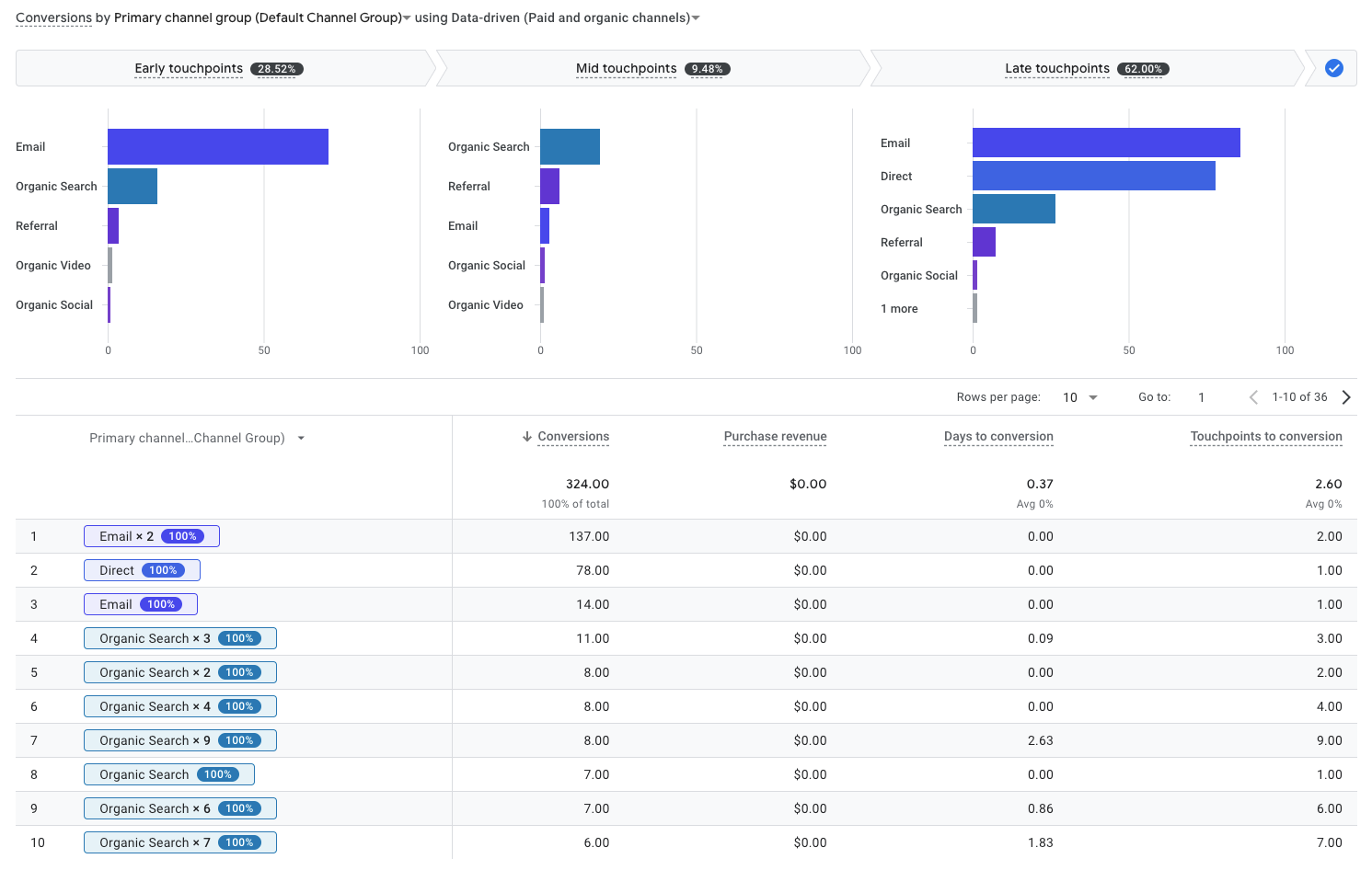In this week’s Data Diaries, let’s talk about GA4 Generative AI and analytics for a minute. What do we love about data and analytics? When properly done, when grounded in reality, data and analytics can help point us in the right direction. What marketing channel is working best? Data is generally more helpful than an uninformed opinion. How should we allocate our ad budget this quarter? Analytics tells us what we’ve gotten for our spend so far.
The problem with data and analytics is that very often, it’s decoration. We make a report, we build an analysis, and we hand it to our stakeholders and…
Nothing.
It becomes binderware. Shelfware. It’s decorative at best, and while our stakeholders may appreciate the thoroughness of our efforts or the attractiveness of our visualizations, ultimately nothing happens with it.
Why? Because converting analysis into action is difficult. It’s a different kind of thinking and one that many people aren’t necessarily skillful at. This isn’t a knock on them so much as it is a knock on the overall working environment many companies foster, one in which people are under constant stress and strain, unable to make time to think.
Analytics, by its very nature, requires time to think, to reflect, to consider carefully. When you’re presented with a chart that shows this kind of time-to-event decay model (which is what Google Analytics 4 uses as its data-driven model), it’s simply unclear what you should do next:

It’s a good analysis; if you know the underlying architecture, it makes sense. But if you don’t have that experience and the boss is badgering you for an answer now, now, now, what is the average marketer going to do?
Not use the data. They’ll just wing it in the hopes that they’re right and the boss will move onto the next false urgent crisis.
So what’s the solution? How do we get ourselves out of this conundrum? This is where generative AI can be of assistance. Because language and multimodal models like the ones that power ChatGPT and Gemini and Claude are trained on vast quantities of data – including data analysis – they can often help us bridge the gap between analysis and action.
I loaded the above Google Analytics conversion paths report screenshot into Gemini Advanced, gave it a series of instructions about how to interpret the data, and then asked it for 3 things I’m doing well, 3 things I’m doing poorly, and 3 things I should do next:
3 Things Going Well
- Strong Organic Search Presence: Your public speaking page is attracting significant traffic from organic search, suggesting good SEO or content that answers the questions people are searching for.
- Email Nurturing: Email campaigns play a key role, with many conversions involving multiple email touches. This indicates successful nurturing and engagement with your audience.
- Late-Stage Success: The high credit given to late touchpoints shows your ability to close interested leads. Your public speaking page content and any associated calls to action are likely compelling.
3 Things Going Poorly
- Underperforming Referral Traffic: While referrals drive some conversions, the overall impact could be better. This suggests potential improvement needed in partner outreach or the value offered to those who might recommend you.
- Weak Mid-Funnel Stages: Touchpoints in the middle of the customer journey receive less conversion credit. This indicates a potential drop-off or lack of engagement during that stage.
- Limited Social Media Impact: Organic social channels show limited contribution to conversions. Your content’s format or targeting on those platforms might not align well with your target audience for speaking services.
3 Things To Do To Increase Conversions
- Optimize Mid-Funnel Content: Analyze what users do in the middle of their journey and identify gaps. Provide content like case studies, testimonials, or webinars that cater to people in a consideration phase.
- Refine Referral Strategy: Create targeted incentives or value propositions for potential referral partners. Consider co-marketing opportunities or developing “refer-a-friend” programs.
- Focus on a Targeted Social Channel: Determine where your ideal speaking clients hang out online (LinkedIn, for example). Double down on tailoring your content and engagement on that platform.
What was previously a fairly inaccessible analysis now has concrete steps for me to evaluate and decide if they’re right for my marketing strategy. Instead of me puzzling what exactly is going on in the report, I have a roadmap of what’s working, what isn’t working, and what things I might want to try to increase conversions.
Now, this is a relatively small example. To be thorough, you’d want to incorporate other marketing data as well, such as what activities you’d been doing in this time period that generated these results, other data from other systems like your CRM, etc. that could detail the quality of these conversions, but you get the idea. Instead of staring blankly at a chart, this helps nudge us over into the action side, into doing something with our data… into becoming actually data-driven.
Shameless plug: if you want our help doing this sort of thing for your organization, hit us up.







